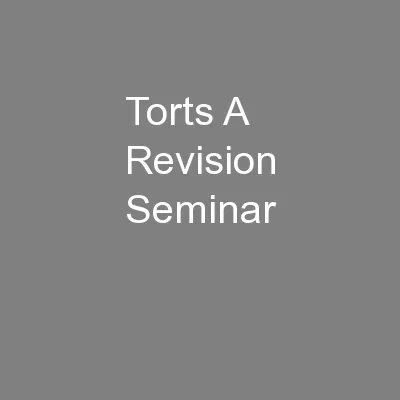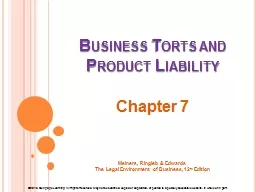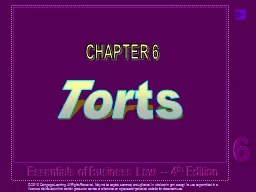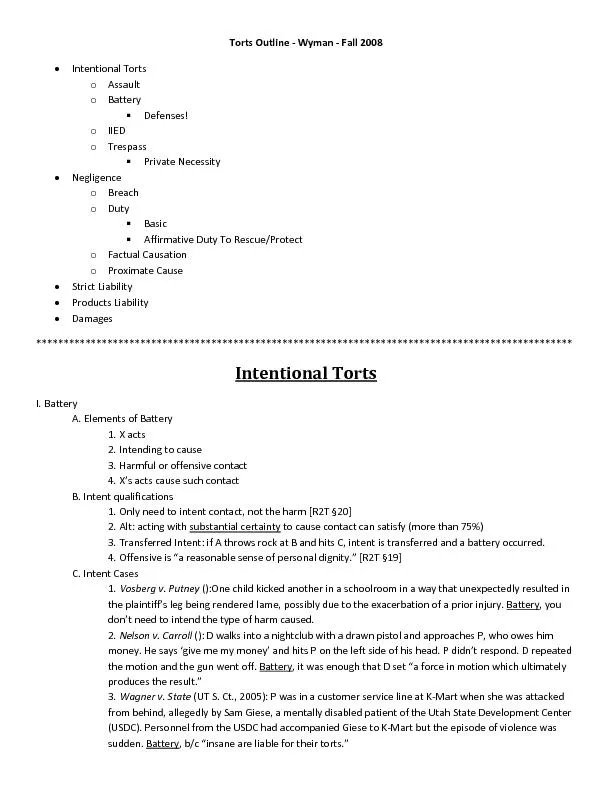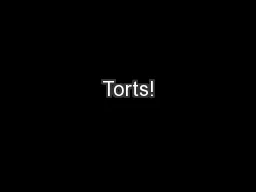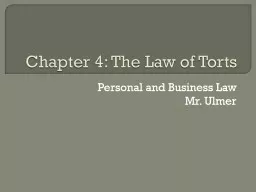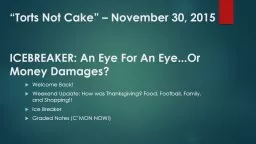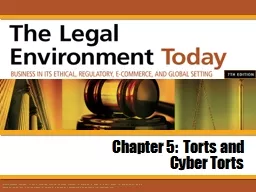PPT-The Law of Torts Business Law
Author : paisley | Published Date : 2023-06-10
Chapter 4 The Law of Torts The law of torts is the concept of rights Under the law people are entitled to certain rights simply because they are members of our society
Presentation Embed Code
Download Presentation
Download Presentation The PPT/PDF document "The Law of Torts Business Law" is the property of its rightful owner. Permission is granted to download and print the materials on this website for personal, non-commercial use only, and to display it on your personal computer provided you do not modify the materials and that you retain all copyright notices contained in the materials. By downloading content from our website, you accept the terms of this agreement.
The Law of Torts Business Law: Transcript
Download Rules Of Document
"The Law of Torts Business Law"The content belongs to its owner. You may download and print it for personal use, without modification, and keep all copyright notices. By downloading, you agree to these terms.
Related Documents

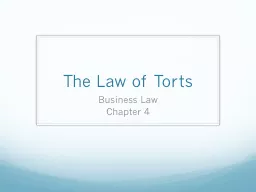
![]he project would supersede the Restatement Second of Torts in the mat](https://thumbs.docslides.com/157249/he-project-would-supersede-the-restatement-second-of-torts.jpg)
